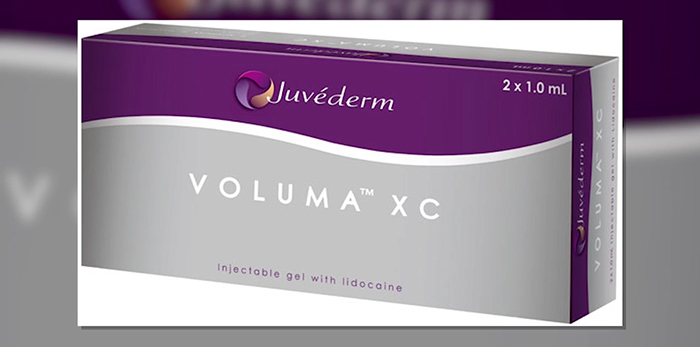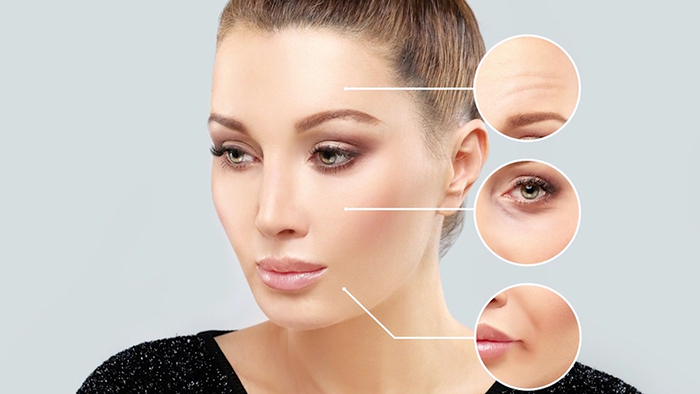In the world of injectable fillers, Voluma is just one choice out of a seemingly endless array of options. Why then, you may wonder, is there all this buzz around Voluma?
In 2013 Voluma, became the first facial filler FDA approved to correct loss of volume in the cheek area. Prior to Voluma, other fillers were used off-label to treat volume loss in the cheeks with mixed results. The great results provided by the new filler are compounded by it’s ability to last far longer than most injectable treatments.
What Is Voluma?
Voluma is a smooth, colorless gel composed mainly of hyaluronic acid. This molecule is a natural substance produced by the body and is the same ingredient found in many other facial fillers, including Voluma’s closely related sibling, the original Juvederm. “Hyaluronic acid is a natural substance present in our dermis,” explains board certified plastic surgeon Dr. Mark D. Epstein of Long Island. “As we age our skin changes, our skin thins, and we lose hyaluronic acid. By putting that back into the body, into the skin, you can add volume to the face.”
Hyaluronic acid helps deliver nutrients and draws water into the skin, which in turn helps skin to maintain moisture and softness.
It’s All About Consistency
Another difference between Voluma and other hyaluronic acid fillers lies in the consistency of the product. Previous hyaluronic acid fillers were all a very soft consistency. Soft fillers are great for filling superficial lines or plumping up lips, where a thick product would be easily spotted and deemed unnatural. Soft fillers, however, can not provide much lift when injected deep into the face.
The bottom line when it comes to facial fillers is that one product does not suit every area of the face; different tissues call for different fillers, which is why Voluma is so exciting for deep parts of the face. The firmer consistency makes Voluma ideal for adding volume below the soft tissue of the cheeks, where it serves as a firm base and can lift the soft tissues above.
“I’ve been injecting the filler onto the surface of the bone, just under the soft tissue in the area of the cheekbone,” Dr. Epstein explains. “What I find is that I can actually sculpt the cheekbone to look aesthetically the way I want it to look. I can bring out the zygomatic arch of the cheekbone, I can give contour however the patient wants it. I have total control.”
Understanding the Causes of Facial Aging When Treating with Fillers
Many aging women approach their surgeon complaining about the appearance of deep creases running from the base of their nose to the corner of their mouth. Medically, these lines are known as the nasolabial folds. A common misconception is that the best way to approach nasolabial folds is to fill the fold itself with filler. Instead of treating the symptom, Dr. Epstein prefers to treat the cause of the problem.
“The key thing when you are solving any aesthetic problem is to figure out what is the cause, because you can’t define the treatment until you understand the problems,” he explains. As the face ages, cheeks lose volume and the skin sags, forming the crease below. In many of these cases, the best treatment is to add Voluma to the cheeks. By restoring volume where it was lost, the skin below is lifted and the nasolabial folds are improved.
Voluma: Less Discomfort & Bruising Than Other Fillers
Benefits of using Voluma:
- Less bruising than superficial fillers
- Less discomfort when injected deep below nerves
- Longer lasting than softer fillers (1-2+ years)
- Ability to sculpt the cheekbone
- Ability to lift the cheeks, reducing nasolabial folds
“Voluma gives almost painless results and the aesthetic results that I get with it are extremely good,” shares Epstein. “My patients are thrilled and the amount of requests that I get to inject Voluma have gone up dramatically. I love Voluma because it gives a beautiful, aesthetically pleasing contour to the cheekbones and the midface and it does so with essentially no downtime. The patients are very happy.”



















Facebook
Twitter
Instagram
YouTube
RSS